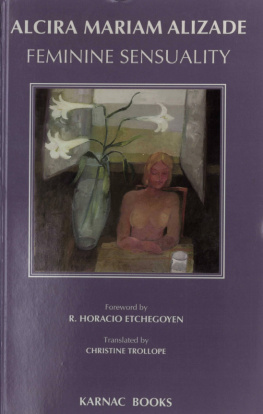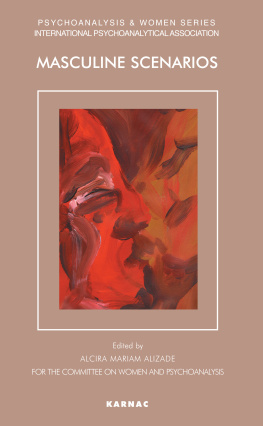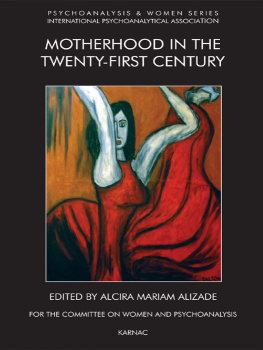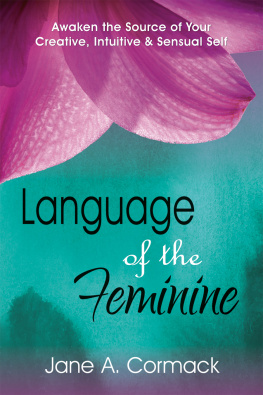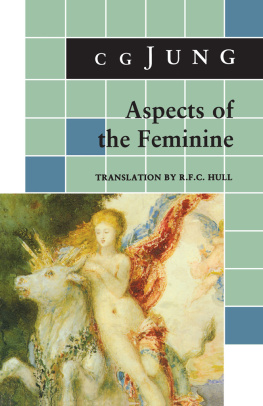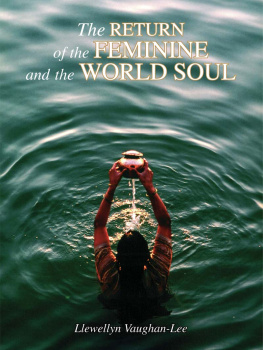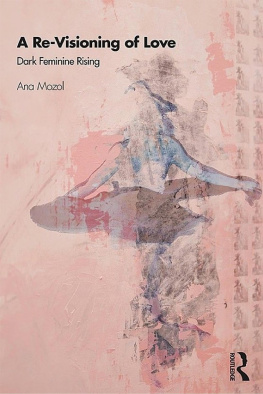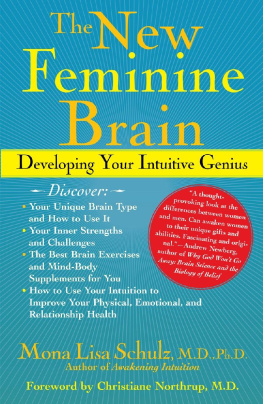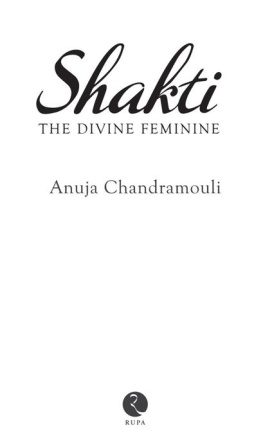Mariam Alizade - Feminine Sensuality
Here you can read online Mariam Alizade - Feminine Sensuality full text of the book (entire story) in english for free. Download pdf and epub, get meaning, cover and reviews about this ebook. year: 2011, publisher: Karnac Books, genre: Romance novel. Description of the work, (preface) as well as reviews are available. Best literature library LitArk.com created for fans of good reading and offers a wide selection of genres:
Romance novel
Science fiction
Adventure
Detective
Science
History
Home and family
Prose
Art
Politics
Computer
Non-fiction
Religion
Business
Children
Humor
Choose a favorite category and find really read worthwhile books. Enjoy immersion in the world of imagination, feel the emotions of the characters or learn something new for yourself, make an fascinating discovery.
- Book:Feminine Sensuality
- Author:
- Publisher:Karnac Books
- Genre:
- Year:2011
- Rating:5 / 5
- Favourites:Add to favourites
- Your mark:
- 100
- 1
- 2
- 3
- 4
- 5
Feminine Sensuality: summary, description and annotation
We offer to read an annotation, description, summary or preface (depends on what the author of the book "Feminine Sensuality" wrote himself). If you haven't found the necessary information about the book — write in the comments, we will try to find it.
Feminine Sensuality — read online for free the complete book (whole text) full work
Below is the text of the book, divided by pages. System saving the place of the last page read, allows you to conveniently read the book "Feminine Sensuality" online for free, without having to search again every time where you left off. Put a bookmark, and you can go to the page where you finished reading at any time.
Font size:
Interval:
Bookmark:

First published in 1999 by
by Karnac Books
118 Finchley Road
London NW3 5HT
Copyright 1999 Alcira Mariam Alizade
Spanish edition: La sensualidad femenina, 1992, Alcira Mariam Alizade; published by Amorrotu Editores, Buenos Aires, Argentina
The rights of Alcira Mariam Alizade to be identified as the author of this work have been asserted in accordance with 77 and 78 of the Copyright Design and Patents Act 1988.
All rights reserved. No part of this publication may be reproduced, stored in a retrieval system, or transmitted, in any form or by any means, electronic, mechanical, photocopying, recording, or otherwise, without the prior written permission of the publisher.
British Library Cataloguing in Publication Data
A CiP. for this book is available from the British Library
ISBN 1 85575 097 X
10 987654321
Edited, designed, and produced by Communication
Crafts Printed in Great Britain by Polestar Wheatons Ltd, Exeter
To my sons, Ariel and Juan Martin to life
W riting this book has been an adventure, a journey across an ocean of wordsa journey undertaken in passion, where my ship was in constant danger of foundering on hidden reefs.
I want to thank so many friends who supported my task. The names flood in, and I have often merely scratched in their initials to record my gratitude.
I am delighted to present these pages in which I intend to sort out from my practice some variables that play a role in female sensuality, whose origins lie in both the bodys animality and in its vast spirituality.
Contributions from Freud onwards are many. It was impossible to go through them all before publishing this essay. Time was short, and much valuable material had to be omitted.
I also thank the authors who helped me in my work of thinking, whether their bias was in the direction of admiration or opposition. In both cases they gave me the opportunity of fruitful confrontations that contributed to the progress of my book.
Special thanks to Didier Anzieu for having looked at parts of this text and wishing me courage in my venture as an author.
R, Horacio Etchegoyen
F emale sexuality has always been in the forefront of psychoanalytic research. Freud was at first inclined to believe that the characteristics of boys infantile sexuality were also applicable mutatis mutandis to girls, but was later compelled to recognize that the matter was not so simple. At any rate, from the time of the Three Essays and even earlier, Freud always maintained that the organ of infantile genital sexuality was the penis and that both sexes discovered the vagina only at puberty. So it was that he built up his theory of sexual monism (or phallocentric theory), which became ever more consolidated and coherent as the years passed. A decisive point on this journey was reached with Freuds tardy realizationas he himself saidthat, just as there were an oral and an anal stage in libidinal development, so too there was an infantile genital organization that was phallic, in that both boys and girls recognized only the penis as an organ that might be present or absent, whereas the vagina did not exist.
Many prominent psychoanalysts, and a man who knew psychoanalysis and women very well, rebelled against the monistic theory of sexuality and demanded that women be accorded an equal position with menand one that was, moreover, different from theirswhile at the same time asserting that girls knew and recognized the vagina. (Although this is a basic empirical fact, it is always amenable to theoretical discussion.)
There was a moment in history when it was possible to locate these two opposing conceptions of female sexuality geographically, the first in Viennaon the continent of Europeand the second in Londonin the British Isles. In his famous paper for the Wiesbaden Congress of 1932, The Phallic Phase, Ernest Jones (1933) declared himself to be plus royaliste que le rot in categorically rejecting Freuds assertion made a year earlier that it was only in the male child that we find the fateful combination of love for the one parent and simultaneous hatred for the other as a rival (Freud, 1931b).
This polemic continued unabated and then, as we know, spread throughout the world after the tragic Anschluss of 1938. With the subsequent progress of research, the dualistic theory of sexuality gained more and more adherents, as witness the publication in 1964 of Female Sexuality, edited by Janine Chasseguet-Smirgel (English edition, 1970), in which a group of eminent French analysts decisively espoused Joness position. At the same timeor more precisely a few years latera revisionist trend arose among the American ego-psychologists and culminated in the appearance in 1977 of Female Psychology, edited by Harold Blum.
***
The fact that Alcira Mariam Alizades book is called Feminine Sensuality is not due merely to a concern for semantic precision; still less is the title a play on words, because her fundamental thesis, to nay mind, is that women must study, understand, and conquer themselves through their sensuality, for all that anatomy may be their destiny.
The author clearly states her views in the most important chapter, Feminine orgasms: I am aware that my position has a controversial tinge and that it is at variance with orthodox conceptions of how women approach pleasure and sexual enjoyment. The plural is used because the forms and locations of the female orgasm are more varied than those of its male equivalent and because it is not necessarily a single entity, as it is in men. On the other hand, given the human races innate bisexuality, the female orgasm may also be encountered in men, even if women have easier access to it.
The concept underlying Alizades argument is surely Didier Anzieus skin-ego, and her guide throughout is the babys experience of satisfaction at the breast as the model of orgastic satisfaction.
The skin-ego is the precursor of the ego proper; anchored in the epidermal integument, it contains the image of the self, where tactile sensations, whether endogenous or exogenous, and active and passive alike, allow the subject to distinguish between inside and outside, thereby supplying the foundation for the organization of the ego of the affects and drives. Yet the ego is not merely an outer integument, for we must also postulate the existence of a psychic locus of pure stone that affords protection from narcissistic wounds and sustains self-esteem.
In the Three Essays Freud had described the effects of a breastfeed as a kind of orgasm, which would constitute the model for all sexual satisfaction in adult life. That was the basis of Rados explanation of melancholia in terms of the feeding orgasm, and it is also the starting point of our present author, who considers that this primordial orgasmas she calls itis the predecessor of all the individuals future erogenic experiences. The primordial orgasm expands to cover the entire surface of the body and precedes the difference between the sexes and the notion of conflict, at a time when the self-preservative and the sexual drives operate in unison. As the backcloth to our erotic lives, the primordial orgasm is a prelinguistic experience in the service of primary narcissism and of the pleasure principle; it is ultimately a primary form of pleasure involving the death drive fused with the life drive.
While the primordial orgasm is the matrix of all adult sexuality, by virtue of its qualities it is understandably more readily applicable to women than to men. It provides a foundation for comprehending the different forms in which the various erotisms will combine to make up womens rich libidinal potential, whereby the orgasm can flourish in the most disparate circumstances. It is interesting to note that in Alizades view men do not understand female sensuality, partly because of the difficulty they have in accepting womens erogenic overflowing. From this standpoint the persistent attempt to accommodate the female of the species in the procrustean bed of the male orgasm is a way of constraining, dominating, and controlling her. The author concludes that fantasies of female erogenic overflowing not uncommonly lie at the root of sexual pathology in both men and women.
Font size:
Interval:
Bookmark:
Similar books «Feminine Sensuality»
Look at similar books to Feminine Sensuality. We have selected literature similar in name and meaning in the hope of providing readers with more options to find new, interesting, not yet read works.
Discussion, reviews of the book Feminine Sensuality and just readers' own opinions. Leave your comments, write what you think about the work, its meaning or the main characters. Specify what exactly you liked and what you didn't like, and why you think so.

